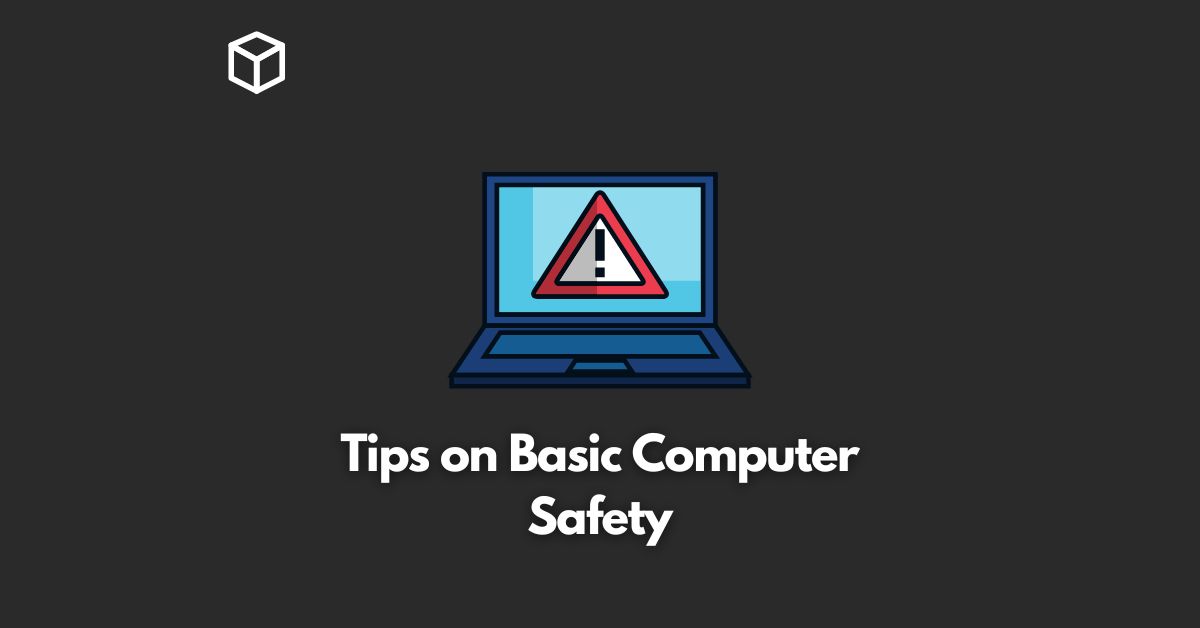A computer is not just a device it’s a treasure trove of personal and business data.
This wealth of information, if fallen into the wrong hands, can pave the way to identity theft, fraud, and a multitude of cybercrimes.
Staying vigilant about potential threats like viruses, malware, phishing attacks, Trojan horses, and other online scams is no longer optional but a necessity.
This article will delve into ten fundamental computer safety tips that will help safeguard your money, identity, and personal information.
1. The Fundamental First Line of Defense: Antivirus Software
The first step towards a secure system is equipping your computer with a reliable antivirus software.
In today’s computing landscape, not having an antivirus installed on your system is akin to leaving your house unlocked in a neighborhood known for burglaries.
Antivirus software plays a critical role in your computer’s defense mechanism.
It continually scans your computer, emails, and downloaded files for any potential threats like viruses, malware, and other malicious content.
Thanks to its automated feature, most antivirus software can be configured to scan files routinely and check for new definition updates daily, effectively taking the guesswork out of protecting your system.
There are reliable antivirus programs available for every operating system, be it Windows, Mac, Android, iOS, or Linux. Also, in addition to several paid applications, there are a plethora of free antivirus products that offer robust protection for your crucial data.
2. Plug the Gaps: Install Security Patches Regularly
Software applications and hardware devices, no matter how sophisticated, have vulnerabilities that can be exploited by hackers.
These unscrupulous entities continuously look for these weak spots to infiltrate your computer system and gain unauthorized access to your data.
To outmaneuver these cybercriminals, it’s imperative to keep your computer system updated by installing any available security patches regularly.
These patches are software updates that fix vulnerabilities in an application, thereby preventing hackers from exploiting them.
Also, ensure that your browsers are kept up to date, as they serve as your gateway to the internet and need to be secure.
For Windows users, Windows Update checks for and applies any available updates to the operating system and associated files.
“Patch Tuesday,” also known as “Update Tuesday,” is the day each month when Microsoft releases security patches. Always be alert for prompts asking you to install these updates.
3. Create a Virtual Barrier: Use a Firewall
A firewall is akin to a virtual border patrol that stands guard between your computer and the vast internet.
It scrutinizes incoming data and uses security rules to determine whether or not that data can enter your computer system.
Windows has a built-in firewall enabled by default. Mac users can enable the built-in OS X firewall.
If these do not meet your requirements, there’s a plethora of free firewall programs available that can provide an additional layer of protection.
4. Be a Guardian of Your Personal Information
In the age of oversharing on social media, it’s prudent to be cautious about disclosing your personal information.
Personal details like your mother’s maiden name, your Social Security number, or your home address can be misused if they fall into the wrong hands.
When shopping online, consider using services like PayPal instead of directly providing your credit card information.
These services add an extra layer of protection as your financial information is safeguarded on a single website, rather than multiple sites.
Only provide sensitive information such as Social Security or credit card numbers on secure websites.
You can identify these sites by checking the URL, which should be prefaced with “https://” (Hypertext Transfer Protocol Secure), indicating a secure connection.
5. Command Your Email
Emails are often a hotbed for malicious content. Adopt a policy of never opening unexpected email attachments, even if they appear to have been sent by someone you know.
Cybercriminals often spoof sender’s names to trick recipients into opening attachments that collect personal information.
Malicious content can also hide in email messages that use HTML or Rich Text. For added security, consider reading your email in plain text.
6. Instant Messaging: A Potential Gateway for Cyber Threats
Instant messaging, owing to its frequent usage, has become a preferred target for worms and Trojans.
Cybercriminals continuously devise new ways to extract personal information and gain unauthorized access to personal accounts.
Treat instant messages with the same level of suspicion as you would emails.
7. Fortify Your Accounts: Use Strong Passwords
A strong password is your first line of defense against unauthorized access to your accounts.
Create passwords that include a mix of letters, numbers, and special characters.
The more complex and lengthier the password, the more secure it is. Avoid using the same password across different accounts.
If possible, leverage two-factor authentication for an added layer of security.
To manage your passwords more effectively, consider using a password manager application.
Many web browsers, like Chrome and Opera, offer a password-saving feature.
Third-party apps like LastPass can also be beneficial. These applications monitor password entries and save credentials for each account.
The only password you need to remember is the one you created for the manager program.
8. Stay Informed: Keep Abreast of Internet Scams
Cybercriminals often rely on human error, which makes staying informed about common scams a powerful tool in your defense arsenal.
Be skeptical of emails that share sob stories, offer unsolicited job offers, or promise lottery winnings.
Also, steer clear of emails pretending to be security concerns from your bank or e-commerce sites. These emails often contain links to malicious content.
9. Back Up Your Data
Regardless of how secure your computer is, there’s always a chance something could go wrong.
Regularly backing up your data ensures that even if your computer is compromised, you won’t lose your files. Use an external hard drive or a cloud-based service for your backups.
10. Educate Yourself and Others
Cybersecurity education is one of the most effective tools against cyber threats.
By understanding the risks and how to counter them, you can keep yourself safe.
Also, sharing this knowledge with family and friends helps create a safer online community.
Conclusion
Staying safe online isn’t a one-time task but an ongoing process.
By following these ten tips, you can enhance your computer safety and protect your personal and business data from cyber threats.
Remember, in the world of cybersecurity, knowledge and vigilance are your best allies.




